 [![enter image description here][2]][2]
[![enter image description here][2]][2]
I am using some pretty rough, brute force and novice calculations, so if anyone knows a nicer method I am happy to learn.
I want to build an AM radio receiver from scratch. My oversimplified starting point was putting some numbers into the classic 'antenna Thevenin equivalent in series with parallel LC circuit'. Note this is before even giving the demod / amplifier / speaker section any impedance. The resistance is the equivalent resistance of the antenna, and I assume the LC circuit has negligible resistance.
From straightforward impedance blabla we have
$$ |\frac{v_o}{v_i}| = \frac{L\omega}{\sqrt{(L\omega)^2 + R_1^2(1-\omega^2LC)}} $$
$$\omega_o = \sqrt\frac{1}{LC} $$
And if I make a dodgy estimate of bandwidth by defining it as the distance (in terms of angular velocity) between the solutions to the amplitude function at amplitude = 1/2 of resonant amplitude:
$$ |\frac{v_o}{v_i}| = \frac{1}{2} $$
Which leads to a quadratic equation in omega. The difference of the solutions is the distance between the abovementioned solutions, and using the quadratic equation this eventually leads to:
$$(\Delta\omega)^2 = (\frac{\sqrt{3}}{R_1C})^2 + (\frac{2}{\sqrt{LC}})^2 $$
Now, apparently AM bandwidth is about 10kHz. Imagine we want to listen to CMAA Pinar del Río (580 kHz AM), we immediately know the required capacitance to be able to tune to this channel. With, say, 10^-12H that's about 0.0755F, converting the channel frequency to radians per second and so forth.
Now looking at the equation for the bandwidth, we require that $$\Delta\omega^2 = 10^2 [kHz]= 6.28 *10^8 $$
You can try plugging these numbers to solve for R, and you'll see we get imaginary resistance. The problem is that the natural frequency is larger than the bandwidth. Unless I have made incorrect assumptions about which frequencies we require, I don't think the equations are wrong. My radio works fine - so what's happening?
How do we get real resistance here and/or thus or otherwise find the required equivalent resistance for this oversimplified model?
PS
If we give the demod/etc. part an equivalent resistance R_eq in parallel with the LC circuit we have, for the bandwidth:
$$\Delta\omega^2 = R_{eq}^2(12\omega_{o,RC}^2+\frac{2}{RCL}-\frac{1}{L^2}) + \frac{4}{RLC}$$
Which doesn't look like it'll be much nicer to us w.r.t. tuning into frequency higher than bandwidth.